From the vault | The Dassault Mercure - an era before the B737 and A320
Prashant-prabhakar
05 Feb 2022
Having been proposed as a French counterpart to the American Boeing 737 and Douglas’ DC-9, the "Dassault Mercure" was developed and manufactured by French aircraft firm Dassault Aviation.
Developed at a time when France was stepping up its game as global aviation power, it was Dassault's first venture into the commercial jet airliner market. Introduced at the beginning of the jet age, the "Sud Aviation Caravelle" - a twin-engine short and medium-haul airliner and the "Nord-262 propjet" were France's give-away to aviation.
Sud Aviation Caravelle | Wikipedia
Touted to be the next big thing, and despite being a favourite among pilots and passengers alike, the "Mercure" programme failed to take off successfully and soon faded into oblivion.
The beginning and the end
The programme "Mercure" was officially launched in April 1969. Manufacturing to be carried out under the main contractors of Dassault was shared between Fiat (Italy), CASA (Spain), ADAP (Belgium), the federal aircraft builder FW of Emmen (Switzerland) and Canadair (Canada). This was the first large-scale European cooperation programme in civil aeronautics.
The Dassault Mercure was a twin-engine narrow-body powered by two wing-mounted Pratt&Whitney JT 8 D 15 double-flow engines, very much similar to the contemporary Boeing 737-200 although slightly bigger and heavier.
Dassault Mercure | Dassault Aviation
I wanted to name it for a mythological figure and I could only think of one who had wings on his helmet and ailerons on his feet – hence the name Mercure (Mercury).Marcel Dassault, Founder and Owner, Dassault Aviation
Marcel Dassault | Dassault Aviation
The prototype of the Mercure 100 made its maiden flight from Mérignac (Gironde, France) on 28th May 1971 with a crew including Jean Coureau, chief pilot, Jérôme Résal, pilot, and Gérard Joyeuse, test engineer.
On 2nd June, the aircraft arrived at the Paris Air Show for its 6th flight and with only 9 hours of test flights.
At the time, the largest 737 could seat 136 passengers, while the DC-9 was even smaller, with a limit at just 125. Therefore, the Mercure decided to be marketed as a large aircraft for high-demand short-haul routes, something the two American giants hadn’t yet developed.
However, despite the new airliner’s excellent pedigree and its manufacturer’s high hopes, the biggest difference between the Mercure and the Boeing 737-200 was the range. The aircraft could travel just 1,700 kilometres - thereby allowing the Mercure to operate brilliantly in western Europe.
However, it failed to flourish in its ultimate target market-the United States which wasn’t compatible with the short-range jet.
The aircraft was also disadvantaged because of its engines: its Pratt & Whitney engines were relatively old, noisy and fuel inefficient. To remedy the situation, Dassault designed a new version of the Mercure – the Mercure 200 – with two Snecma/General Electric CFM 56 engines.
Tech and Specs
The Mercure was the first airliner to have a Head Up Display (HUD) for pilots, which allowed take-offs with forward visibility (RVR – Runway Visual Range) as low as 100 metres (328 feet).Source
DASSAULT MERCURE 100 2D panel | HUD | HJG Message Boards-Proboards
It intentionally exchanged fuel for passenger capacity to carry a greater passenger load; as such, the Mercure had up to 17 per cent more seats than the competing Boeing 737 while having a shorter range.
Dassault Mercure six-abreast cabin | Flickr
With engines tucked under its wings, its nose and fuselage had a distinctly modern look.
The cockpit was fitted with two instruments that remain unique among civil transports: an Angle Of Attack (AOA) indicator used to illustrate lift generated by the wing, which allowed pilots to fly visual approach speeds accurate to within a single knot, and a G meter to avoid exceeding airframe structural limits (which were +2.5G and -1G).
Air Inter - the only airline to order the Dassault Mercure
On 30 January 1972, Air Inter placed an order for ten Mercures, which had to be delivered between 30 October 1973 and 13 December 1975.
Dassault Mercure 100 | Wikimedia Commons
The Mercure was so carefully tailored to the needs of domestic-only Air Inter that it was crippled by a maximum range of only 2,000 kilometres (1,295 miles), and, with maximum payload, only 1,000 kilometres (621 miles).Source
On 29 April 1995, the last two Mercures in service flew their last commercial flights.
At the time of their retirement, they had an impressive track record- logging in 360,000 flying hours, transporting 44 million passengers in 440,000 flights and with a 98% in-service reliability, with zero accidents.
SOURCE(s)
COVER: AirHistory.net
Read next
Gaya Airport's 'GAY' Code is Inappropriate; Panel asks centre to change it
Radhika Bansal
05 Feb 2022
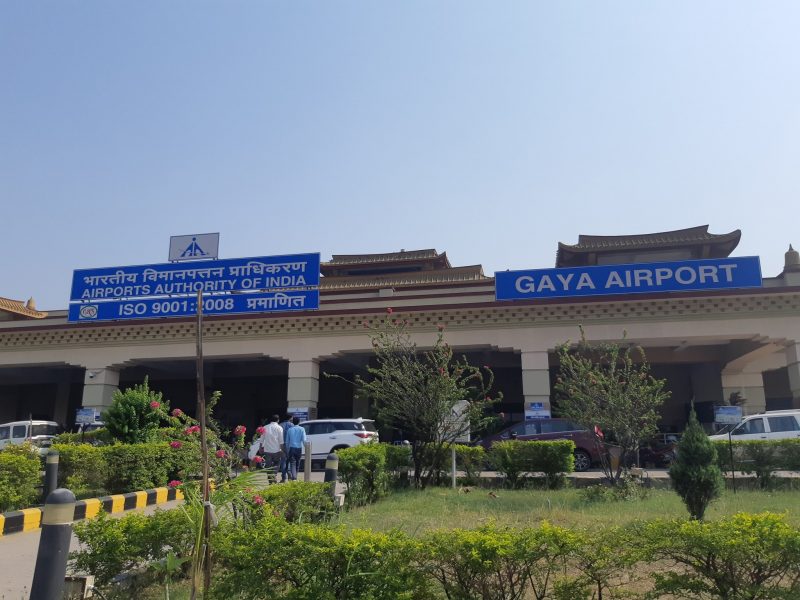
A Parliamentary panel on Friday, February 4 said the use of the 'GAY' code for Gaya airport is inappropriate for the holy city and asked the government to make all efforts to change the code.
The Committee on Public Undertakings, in its first report tabled in Parliament in January 2021, had recommended changing the code of Gaya airport from 'GAY' and also suggested an alternate code name like 'YAG'.
According to the civil aviation ministry, IATA has expressed its inability to change the code without a "justifiable reason primarily concerning air safety".
The International Air Transport Association (IATA) assigns the code for airports.
The International Air Transport Association (IATA) assigns the code for airports. The committee said the code name appeared inappropriate, unsuitable, offensive and embarrassing considering that Gaya is a holy city.
In an action taken report tabled in Parliament on Friday, February 4, the panel mentioned the issue and has asked the government to "make all effort to take up the matter with the IATA and concerned organisation as the issue involves inappropriate code naming of an airport of a holy city of our country." The ministry, in its action taken to reply, has submitted that the matter was referred to IATA by Air India.
In this regard, IATA stated that as per Resolution 763, the location codes are considered permanent and a strong justification primarily concerning air safety needs to be given.
Gaya Airport's 'GAY' Code is Inappropriate
"Gaya airport IATA code 'GAY' has been in use since operationalisation of Gaya airstrip. Hence, without a justifiable reason primarily concerning air safety, IATA has expressed its inability to change the IATA code of Gaya airport," the ministry told the panel.
The ministry's reply has been mentioned in the panel's report tabled on Friday, February 4.
"The committee appreciates the efforts of Air India being a member airline of IATA taking up the request with the international air transport association but, yet, re-emphasise the government also to make all effort to take up the matter with the IATA...," the report said.
In the first report that was tabled in Parliament in January 2021, the panel had mentioned that it was apprised about a request received by the civil aviation ministry regarding the change of code name of Gaya airport.
The panel had also recommended that the government and Air India complete all the requisite consultations and formalities in a time-bound manner to change the code name of Gaya airport.
Read next
Parliamentary panel slam aviation ministry over AAI for falling short of global standards in aviation safety and security
Radhika Bansal
05 Feb 2022
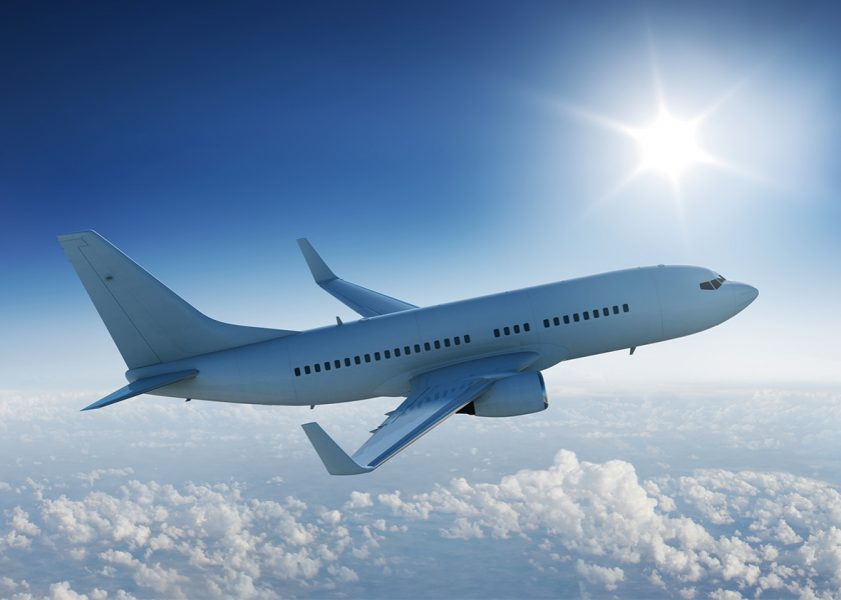
A key parliamentary committee has rapped the Ministry of Civil Aviation over the Airports Authority of India (AAI) lagging behind global standards in two critical elements of aviation safety and security measures, according to a report by The Tribune India.
“Out of eight critical elements, AAI is lagging behind ineffective implementation in two critical elements—organisation and licensing, which is 61.54% and 25.26%, respectively, against the world average score of 70.8%,” the Committee on Public Undertakings has stated in its report on AAI tabled in Parliament.
ICAO requires its member states to establish and implement an effective state oversight system for aviation safety and security.
The other six critical elements, as mandated by the International Civil Aviation Organisation (ICAO), are legislation, operations, airworthiness, accident investigation, air navigation services and aerodromes. ICAO requires its member states to establish and implement an effective state oversight system for aviation safety and security by taking into account the eight elements.
The Committee observed that while AAI’s overall effective implementation score of 70.8% was a notch above the world average of 69.76%, it trailed by a wide margin in the organisation and licensing where the world average was 71.14% and 73.55%, respectively.
The Committee had earlier expressed concern that India, which is one of the major civil aviation markets after the US and China, was lagging far behind in the effective implementation of the two critical elements.
Pointing out that AAI had not been able to keep pace with global standards, the Committee had expressed apprehensions that it may deter foreign investments in the civil aviation sector and thereby adversely affect the sector’s expected growth.
The Ministry of Civil Aviation had stated before the Committee that licensing covered pilots, flight engineers, ground personnel, air traffic controllers and aerodromes.
All AAI airports used for international operations and all AAI domestic airports operating scheduled air transport services are licensed by the Directorate General of Civil Aviation (DGCA) and hence effective implementation in licensing on part of AAI was 100%. Poor percentage of effective implementation in this area may be attributed to other licensing areas, the ministry said.
The Committee however pointed out that the ministry had only elaborated the reasons for poor performance only in respect of licensing and was conspicuously silent on the other critical element of the organisation. Even while talking about licensing, the ministry only referred to aerodromes and left out other components such as personnel.
While seeking elaborate reasons for poor performance in the two critical elements, the committee stressed that the central government should take suitable steps not only to reach world averages but also to be on par with the best in the world.
(With Inputs from The Tribune India)
Read next
Jhunjhunwala likely to use stock options to entice employees for his airline
Radhika Bansal
04 Feb 2022
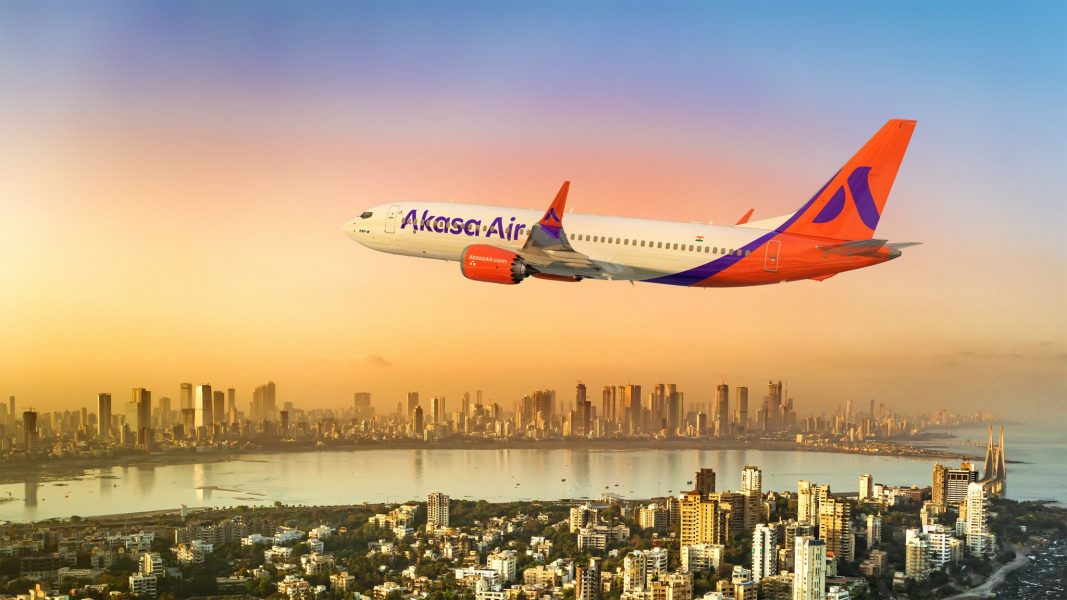
Akasa, a new Indian airline backed by billionaire Rakesh Jhunjhunwala, plans to offer stock options to attract staff, using a lure more often deployed by technology startups in its bid to gain a foothold in one of the world's most competitive air-travel markets.
The carrier, which is preparing to start flying in late May, is taking the unusual approach of granting company shares to a bigger pool of top employees, rather than a select group of senior executives, as the aviation industry globally suffers from a talent shortfall.
Airlines have retrenched thousands of workers because of the pandemic and many pilots have quit, either taking early retirement or switching careers.
Akasa plans to offer stock options to attract staff.
The degree to which Akasa plans to grant stock options for staff will be "far greater than most airlines in India and hopefully reminiscent of maybe some of the tech startups where they go fairly deep in the way they provide employee stock ownership plans," Dube said. There isn't a suggestion stock option would be given to aircrew or regular pilots, however.
Putting employee satisfaction so squarely front and centre is an interesting strategy in a market that's historically gone after customers by offering cut-throat prices. Rock-bottom airfares have long been a feature in India, which has a suite of no-frills carriers targeting the nation's huge flying public.
"We want to have an organization that's very tight-knit in values, but diverse in experiences, genders, locations within India. We were saddened by the plight of employees through the pandemic, some of the bankruptcies that have taken place in Indian aviation, and we wanted to create homes for them where they are happy.What gives us confidence is the way in which we have purchased our aircraft, established our long-term engine maintenance deals, the way in which we have started leasing our aircraft with the lessors. The leadership team Akasa has attracted is also "hyper-focused on the hundreds of elements that make up an airline's cost structure."Vinay Dube, CEO, Akasa Air
Akasa, backed by some impressive aviation veterans, has hired around 50 employees for back-office functions and is now recruiting pilots, flight attendants and airport staff, said Dube, who is also Akasa's founder and managing director.
The careers page of Akasa's website, decked out in the airline's orange and purple brand identity with a tagline of "It's Your Sky," states that new applications have been paused after an "unprecedented number" of inquiries were received.
Vinay Dube; Founder, CEO, Managing Director; Akasa Air
"It's flattering, overwhelming, but there's also a hint of sadness because I don't want so many people to be either unemployed or unhappy," said Dube, who says 95% of staff call him by his first name. "If we don't treat our employees well, if we don't take care of them, then it's very hard for them to take care of customers, which we want them to do."
Customer service alone isn't going to alleviate the pain wrought by Covid, however. Airlines in India are expected to take a USD 8 billion hit from the pandemic and even before the virus decimated air travel, the landscape was littered with failures.
Former billionaires like liquor baron Vijay Mallya with Kingfisher Airlines and travel agent-turned-entrepreneur Naresh Goyal with Jet Airways India Ltd. couldn't crack the market, both venturing into cheap, on-time budget business to augment their more premium offerings.
Kingfisher folded in 2012 after failing to clear its dues to banks, staff, lessors and airports.
Kingfisher folded in 2012 after failing to clear its dues to banks, staff, lessors and airports, while Jet Airways has new owners following a court-monitored, insolvency-resolution process.
Even those still in business find it tough. SpiceJet Ltd. almost collapsed before its founders returned to gain control and revive the company in 2015. Air India Ltd. survived on taxpayer bailouts worth billions of dollars before the government sold it to Tata Sons and the local ventures of Singapore Airlines Ltd. and Malaysian tycoon Tony Fernandes's AirAsia Bhd., both of which teamed up with Tata Sons, have never made money.
Coupled with high taxes on aviation fuel, the sector is so riddled with brutal price wars that don't leave carriers any fat to cover costs it's "chronically ill," IndiGo's Chief Executive Officer Ronojoy Dutta said recently.
"Startups have a particularly difficult road ahead," said Robert Mann, the New York-based head of aviation consulting firm R.W. Mann & Co. The challenges before airline upstarts like Akasa include the availability of sufficient capital and the need to stimulate flyer appetite with cheap fares upon launch, which generates good word of mouth leading to positive cash flow and eventual profit, he said.
Dube is optimistic his airline, with secure financing and a low cost-structure, can succeed where others have failed.
Indeed Akasa's founding team has a long history of running airlines. Dube is a former Delta Air Lines Inc. veteran who also ran Jet Airways until it went belly up in 2019. He briefly led Wadia Group's no-frills carrier Go Airlines India Ltd. and laid the groundwork for the budget carrier to file for an initial share sale.
Vinay Dube with Aditya Ghosh during signing the deal with CFM engines for B737 Max.
Akasa, operated by SNV Aviation Pvt., is also backed by Aditya Ghosh, who spearheaded IndiGo for nearly a decade and propelled the once little-known startup to the nation's top spot, eventually capturing more than 50% of the market.
Under Ghosh, IndiGo placed record aircraft orders worth tens of billions of dollars, had a blockbuster IPO and catapulted itself ahead of AirAsia Group Bhd. and Spring Airlines Co. to become the biggest budget airline in Asia by market value.
Akasa plans to follow a similar playbook of growing at a breakneck pace, adding 18 aircraft during the year ending March 2023 -- the first deliveries from a November order for 72 Boeing Co. 737 Max jets, worth USD 9 billion at sticker prices.
A deal for the 737 Max, which was grounded globally after fatal crashes in Indonesia and Ethiopia, probably helped Akasa secure bigger discounts than usual considering it was one of Max's first new customers after the model's recertification.
Akasa would also have taken advantage of the pandemic to get its aircraft and engine contracts right, which should help it achieve lower costs in the initial years, according to Kapil Kaul, South Asia chief executive officer for Sydney-based CAPA Centre for Aviation.
Akasa is on track to be well-capitalized with a potential ability to raise USD 500 million through sale and leaseback of its aircraft over five years, he said. Jhunjhunwala initially pumped USD 35 million into the airline.
The carrier will begin flying internationally by the summer of 2023.
The carrier will begin flying internationally by the summer of 2023 when it inducts 20 aircraft, the minimum fleet requirement to serve overseas routes according to local regulations, Dube said. Akasa will have an option of flying to the Middle East, Southeast Asia, Nepal, Bangladesh and Sri Lanka, all within the range of a 737 Max.
Akasa also plans to cut down queues at airports and reduce the number of time passengers spend waiting to board by using technology, Dube said, without elaborating.
"If you look at the next 20 years, Indian aviation is going to continue to grow by leaps and bounds," Dube said. "India is geographically a very large country and aviation is under-penetrated, there are many people today who still haven't flown relative to most Western economies. All said and done, we are extremely bullish about the future. 100% -- Akasa will be profitable."
(With Inputs from Bloomberg)
Read next
Government yet to decide on transaction mechanisms for next round of airport leases
Radhika Bansal
04 Feb 2022
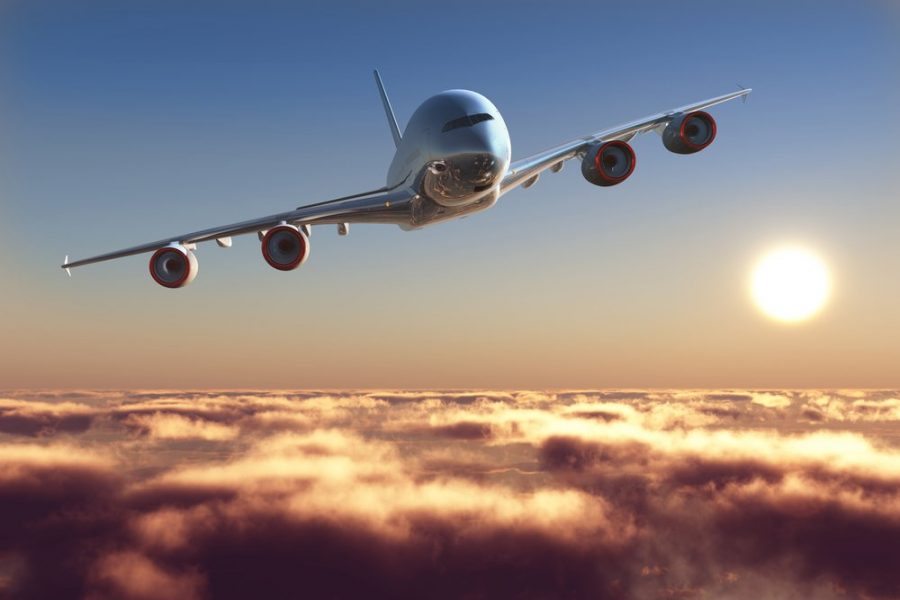
The government on Thursday, February 3 said transaction modalities are yet to be decided for leasing out the next set of airports under public-private partnerships. As part of the National Monetisation Pipeline (NMP), 25 AAI airports are proposed to be leased out over the 2022-2025 period.
Currently, there are 130 operational airports, two water aerodromes and eight heliports. Out of them, five airports are private and four non-AAI airports are joint ventures.
In a written reply to the Lok Sabha, Minister of State for Civil Aviation V K Singh said the government is "yet to decide the transaction modalities for next set of airports to be leased out under PPP mode".
Gen. (Dr.) V. K. Singh (Retd.), Minister of State for Civil Aviation
In 2018-19, the Airports Authority of India (AAI) undertook to bid under PPP for six airports -- Ahmedabad, Jaipur, Lucknow, Guwahati, Mangaluru and Thiruvananthapuram. They were bid out based on Per Passenger Fee (PPF) payable to AAI.
The 25 airports to be leased out as part of NMP include Bhubaneshwar, Varanasi, Amritsar, Trichy, Indore, Raipur, Calicut, Coimbatore, Nagpur, Patna, Madurai, Surat, Ranchi and Jodhpur. Other airports are Chennai, Vijayawada, Vadodara, Bhopal, Tirupati, Hubli, Imphal, Agartala, Udaipur, Dehradun and Rajahmundry.
Shirdi Airport is one of the 8 operational airports.
Meanwhile, the government has accorded in-principle approval for setting up 21 greenfields (fresh) airports in different parts of the country. Out of them, eight airports are operational.
Those are Kannur, Sindhudurg, Shirdi, Kalaburagi, Orvakal, Kushinagar, Durgapur and Pakyong. In a separate written reply, the minister said AAI has requested 78 acres of land from the Bihar government for the proper development of Darbhanga airport in the state.
Out of the 78 acres, 54 acres will be utilised for terminal building, car parking and offices, among others, while 24 acres of land will be for the operational requirement. Civil flight operations started from Darbhanga in November 2020.
The government has received the proposal for renaming Darbhanga airport as the Vidyapati airport.
AAI has developed the interim terminal building of the airport on a land pocket of 2.3 acres leased from the defence ministry, along with strengthening of runway and apron, among others, according to the reply.
Singh also said the government has received the proposal for renaming Darbhanga airport as the Vidyapati airport. "A decision on renaming of airports is taken by the Union Cabinet after due consultation with the concerned central ministries/ departments," he added.
Read next
The Indian Airforce has now, over the years, emerged to be the fourth-best air force in the world. With about 1,80,000 air force personnel and about 1750 aircraft-although, the exact number of aircraft in service with the Indian Air Force cannot be determined with precision-it is one of the most advanced, powerful, and prestigious Air forces in the world.
Indian Air Force | Representative | DNA India
Having been established on 8 October 1932, the Indian Airforce operates a wide range of aircraft from combat fighters, transport and refuelling aircraft, reconnaissance to a small number of passenger planes for dignitaries.
Although the fleet size of the IAF has decreased to 33 squadrons now owing to the retirement of older aircraft, one aircraft remains active today, even after 51 years of operation.
A brief look into the model and its active role in the fleet.
The Boeing B737-200
The Boeing 737-200, with the call-sign VT-EAJ, and now registered as K3187, was first delivered in January 1971 to Indian Airlines-a state-owned domestic carrier at the time. The aircraft played a significant role during then, having performed countless domestic missions across the country.
Planespotters.com
As a part of fleet expansion, the aircraft was 1 of 36, 737-200s delivered to Indian Airlines over nearly four decades. Aircraft deliveries spanned between 1970 and 2008 with the final passenger jet arriving in 2005 and the rest being cargo.
The plane was configured in a 3-3 layout with 126 seats in total, according to Planespotters.com.
Take-over by the Indian Airforce
The Indian Air Force (IAF) acquired VT-EAJ from Indian Airlines in 1993 and reconfigured the aircraft into a VIP configuration, meant to carry important military officials and members of government across the country. As is with any military aircraft meant for diplomatic travel, very little is known about the interiors of the aircraft.
VT-EAJ is one of seven 732s that were transferred to the military in total. K2142 and K2143 were relocated in 1984 and are still in service. In 1986, the IAF acquired two 732s, which were subsequently retired in 1989. Aircraft with registration K3186 is preserved in Hindon Air Base at the outskirts of Delhi. Alliance Air leased the final jet for a short time before returning it to the regional carrier in 2003. (K5011).
The K2142 and K2143 are both relatively young at 38.5 years old, it is not known as to why the K3187 remains in service, despite 51 years of operations (as of 2022). Reportedly, the airframe is still operational meaning the aircraft is still airworthy.
Wikimedia Commons
With changing demands in operations and security needs, the IAF has been updating its fleet ever since.
In addition to the three 737-200s listed above, the IAF has acquired three 737-700 BBJs, specifically mean to ferry officials domestically and to medium-haul destinations.
Boeing BBJ K5012 | Bharat-Rakshak.com
Although seen less frequently now, the 737-200 remains one of the oldest flying aircraft in the country.
SOURCE(s)
COVER: Wikimedia Commons


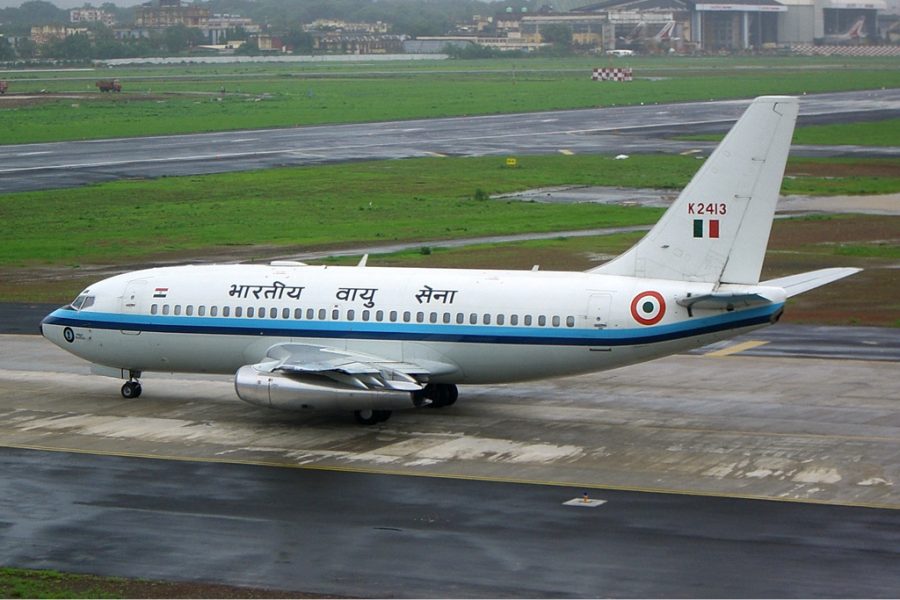
Comment